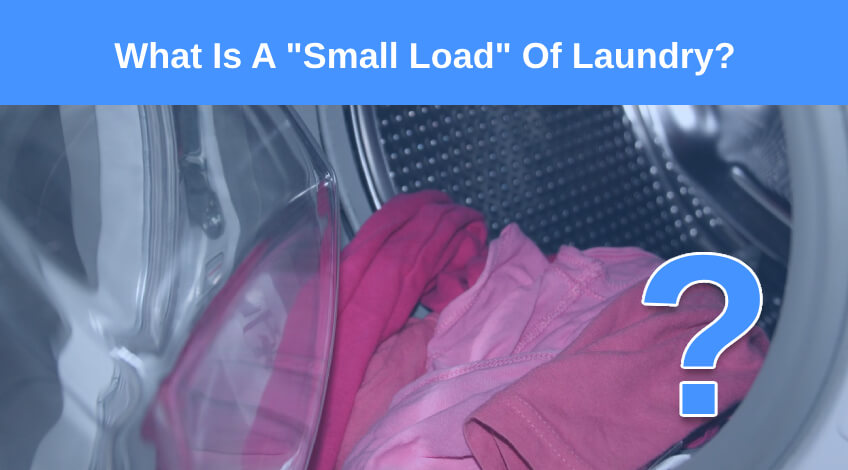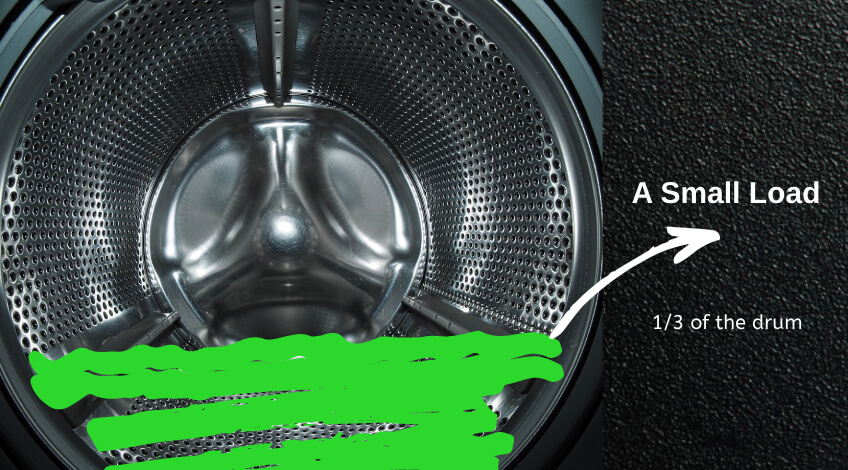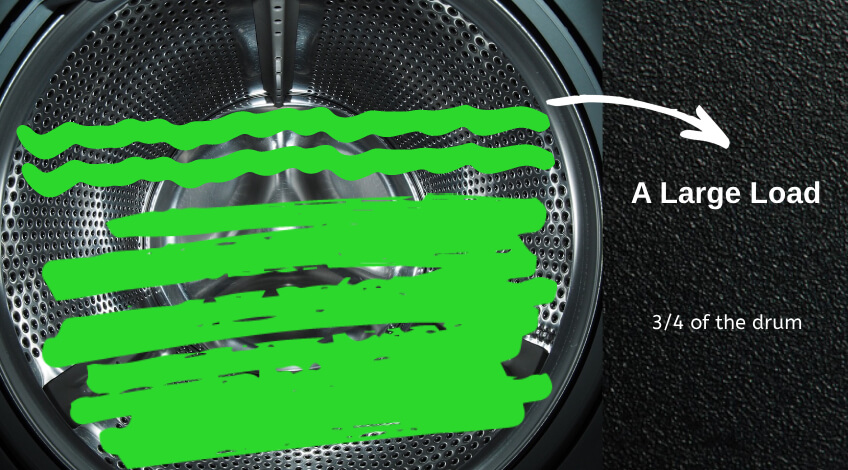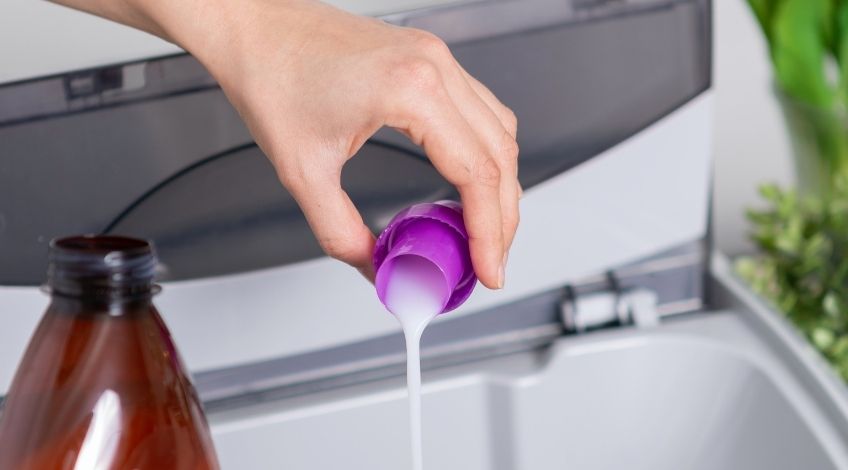
What Is A “Small Load” Of Laundry?
Determining small items is easy in our day-to-day lives. Coins, hairpins, bracelets – just to name a few, all these things are small knick-knacks we have no trouble identifying as to size.
However, this can be a bit different when it comes to laundry. At this point, what’s a small load to you may become a medium load for others.
When it becomes subjective, how do we know how much laundry product to use, especially when the packaging says to add one washing capsule to a small load?
Let’s settle on what a “small load” is in this article, once and for all.
What makes laundry a “Small Load”?
To keep it simple, the volume of your laundry’s load will primarily depend on your machine’s capacity. Each model of washer and dryer being manufactured is specially designed to accommodate a particular weight of laundry.
A small load will usually mean that the drum is only filled to about one-third of its capacity or less than half of its total space.
As an example, most residential washers and dryers have a capacity of 7 kilograms. Of course, there are appliances that have a lower and higher capacity. Some machines can only accommodate 4 kilos of dry laundry, while others can conveniently clean a whopping 11 kilos of clothing!

This means that the bigger the capacity of the machine is, the bigger the “small load” of laundry you can put in!
Easy ways to measure the load of your laundry
As mentioned earlier, we use a simple visual fraction, such as around 1/3 of the dryer drum, to identify that it’s a small load. Aside from this, we can also use math and a neat trick to make your calculations easier.
Method 1: Visually portioning your washer and dryer’s drum
Let’s get into how we visually separate our machine’s drum in an easy way:
When we’re talking about a small load, here’s what it’ll look like:
A small-sized load will only occupy one-third of your washer or dryer’s drum.

When we’re talking about a medium load, here’s what it’ll look like:

A medium-sized load will occupy half of your washer or dryer’s drum.
When we’re talking about a large load, here’s what it’ll look like:

A large-sized load will occupy three-quarters of your washer or dryer’s drum.
Finally, an overloaded load can be called such when there’s little to no space in the drum. This means that it’s already at its overcapacity which will not make your machine efficiently clean or dry your garments.
Method 2: Weighing your laundry to fit your machine’s capacity
For this method, you’ll need to know the actual weight capacity of your machine and a weighing scale.
How do you know your machine’s capacity? Check your appliance’s manual. If this is not possible, search for the specific model you have on the brand’s website.
In this example, we’ll imagine that our washer has a weight capacity of 8 kilograms.
By using the same fractions above, we’ll know that:
A small load is 1/3 of the drum, a medium load is half of the drum, and a large load will occupy ¾ of the drum.
If the washer’s capacity is 8 kilos:
A small load is around around 2.6 kgs, a medium load is 4 kgs, and a large load is 6 kgs. How easy is that?
But how do you weigh your laundry? All you need to do is take a weighing scale and take your weight. Then, hold your laundry and note how much is added to your original weight. That’s how much your laundry weighs.
- Super High Quality and Accuracy. scale is equipped with 4 high precision G-shape sensors and 4 high sensitive electrodes, with advanced BIA technology to ensure your accurate readings with division at 0.2lb/100g, up to maximum capacity 400lb/180kg. With extra large display, low power / overload indication, step-on technology and 4xAAA batteries included.
- 13 Essential Body Data. Runstar smart scale not only shows weight but also BMI, body fat, subcutaneous fat, body water, protein, BMI, body age etc., by electrical Bio-Impedance Measurement Technology. You can weigh yourself and check your body data anytime.
Weight Of Each Load Size By Capacity

| Small Load | Medium Load | Large Load | |
|---|---|---|---|
| 6KG Washing Machine | 2KG | 3KG | 4.5KG |
| 7KG Washing Machine | 2.3KG | 3.5KG | 5.25KG |
| 8KG Washing Machine | 2.6KG | 4KG | 6KG |
| 9KG Washing Machine | 3KG | 4.5KG | 6.75KG |
| 10KG Washing Machine | 3.3KG | 5KG | 7.5KG |
| 11KG Washing Machine | 3.6KG | 5.5KG | 8.25KG |
Disadvantages of doing a small load of laundry
In order to keep your machine in great condition, manufacturers would suggest filling the drum between a medium and large load. This is around half of the washer or dryer’s drum, but not exceeding ¾ of its capacity.
Here are the reasons why washing small loads of laundry is not a good idea:
It can damage your clothes
Do you adjust your detergent use when only washing a small load of laundry?
If you don’t, then you are one of the many people who are unknowingly damaging their garments. This is what happens when you use the same amount of detergent as what you’d use on a medium to large load.

Using too much detergent on your clothes leaves a residue that’ll eventually destroy their fabrics. Also, it’ll make your garments fade much faster and smell mildewy.
SEE ALSO: Is It Better To Wash Clothes Inside Out? (yes! here’s why)
It is a waste of resources
Each load will cost you detergent, water, electricity, and not to mention your time.
Hence, washing only small loads of laundry will be a burden to your budget in the long run.
Since there’s little to no difference in the resources you’ll use when washing a small or medium load, waiting until you have enough dirty laundry to wash them one time will be much better than doing it twice.
SEE ALSO: What Does Half Load Mean On A Washing Machine?
It can damage your washer and dryer
Lastly, the worst thing that may result from frequently washing small loads is washer and dryer damage.
If you frequently wash only a few items, you may notice that your washer or dryer’s drum makes a weird noise when it’s spinning. This happens because when it’s operating while underloaded, the drum will be off balance which causes it to vibrate excessively.
As a result, the drum and belt, along with its other parts are unnecessarily being put under stress, which decreases the machine’s lifespan.
Soon enough, you’ll probably have to call a repair technician once your washer and dryer are no longer responsive or efficient.
Underloading your machine is as bad as overloading it!
It’s bad to cram all your clothes inside the washer, overloading it, as long as they’ll fit. So underfilling your machine is better right?
Not really. When you underload your washer and dryer, not only are you wasting electricity, but also putting them under unnecessary pressure by making their drum off-balance. As a result, your clothes are not as clean, may be damp, and you’re reducing the lifespan of your appliances.
As mentioned earlier, your best bet is to fill your washer halfway for an efficient laundry session. If you’re in doubt about your machine’s capacity, check out your manual to be sure.
Do you have questions? Feel free to leave them below!
Frequently Asked Questions
Washing only a small load of laundry frequently is not good as it can be a waste of your resources. It’s best to wait until you have a medium-sized load (at least half of your machine) to prevent ruining your clothes and washer in the long run.
The time it takes to do a small load of laundry will depend on the setting you choose. This could range from 14 to 50 minutes.
You are overloading your washer if the drum is already over ¾ full of laundry.
It is not okay to wash all your clothes in one load as they may colour-bleed or be too delicate for the cycle. Make sure to sort your garments first (by colour, fabric, delicateness, and more) to prevent ruining them.
The best setting to wash your clothes would depend on what type of material or fabric they’re made of. It’s always the best idea to follow your clothing’s care labels and check if you can use the cotton setting, choose the warm wash, put in the tumble dryer, and more.





